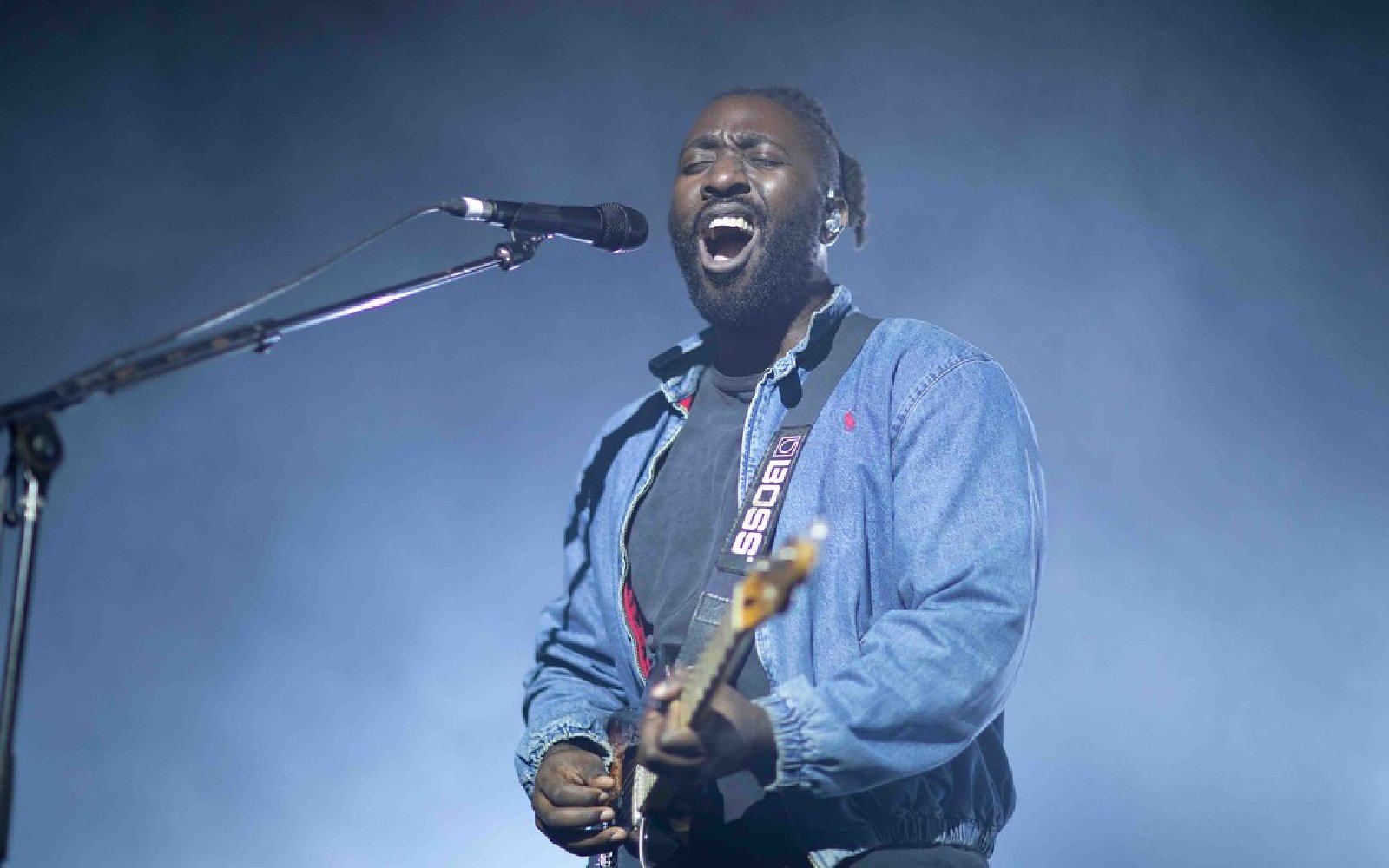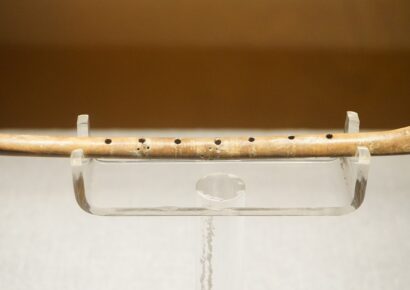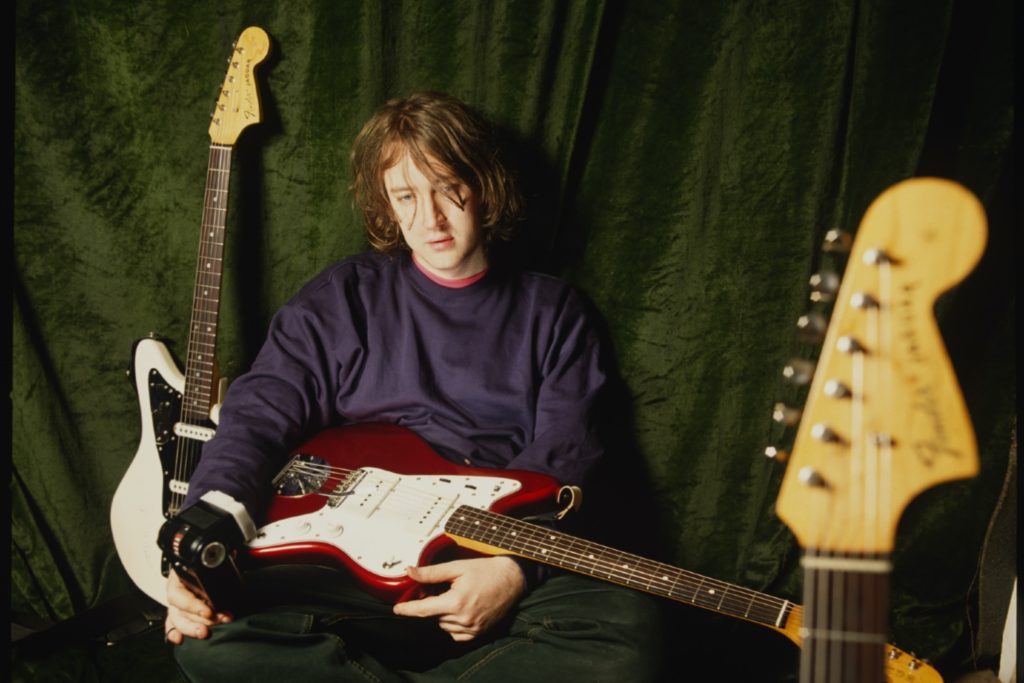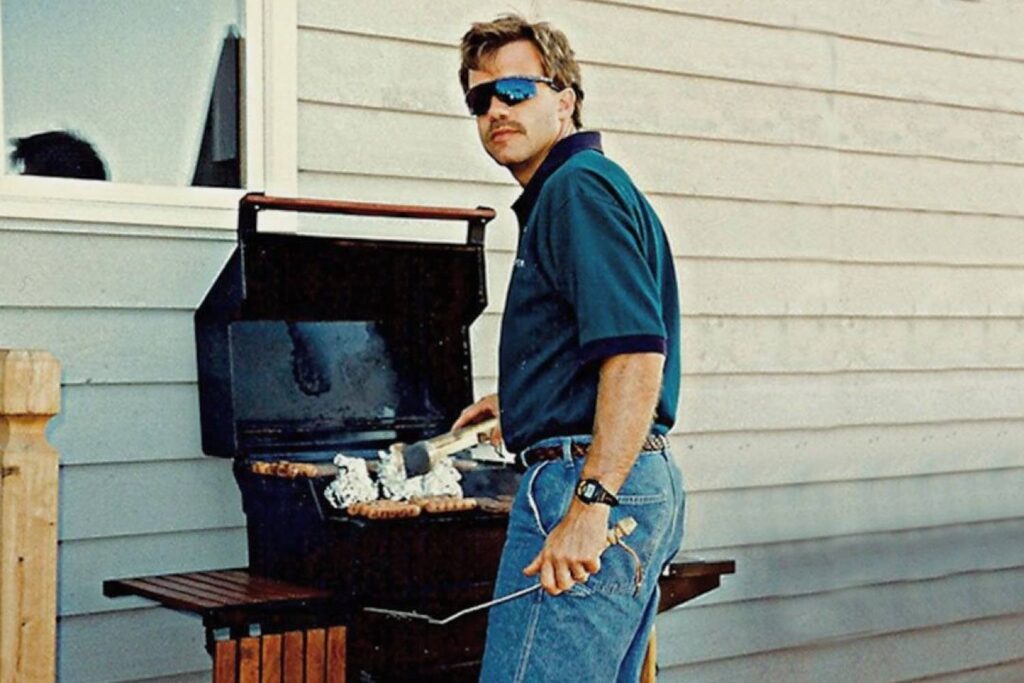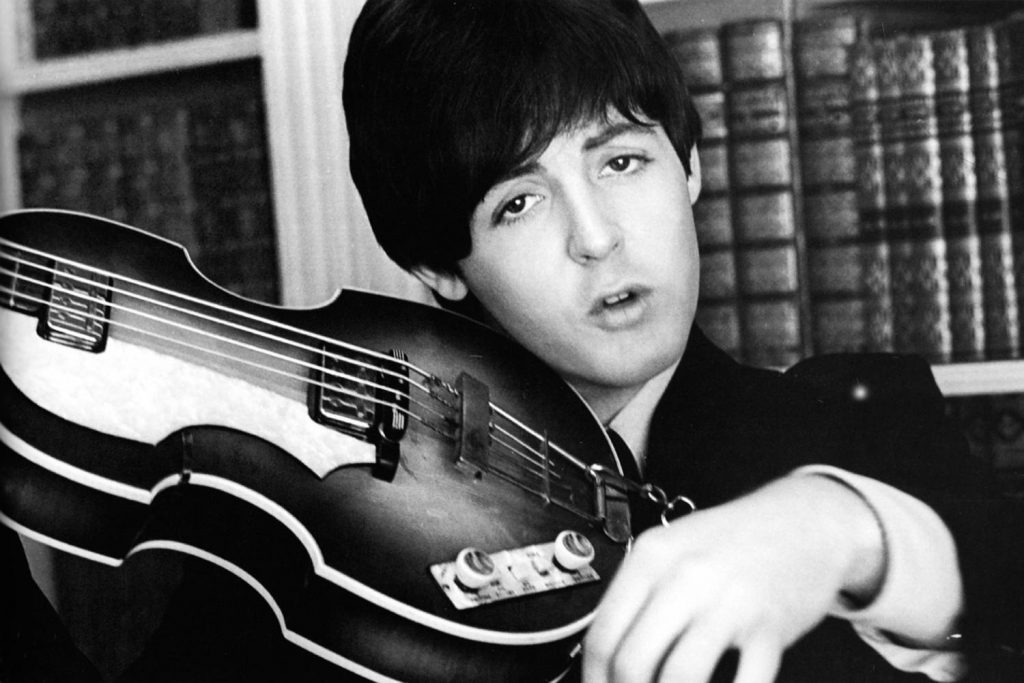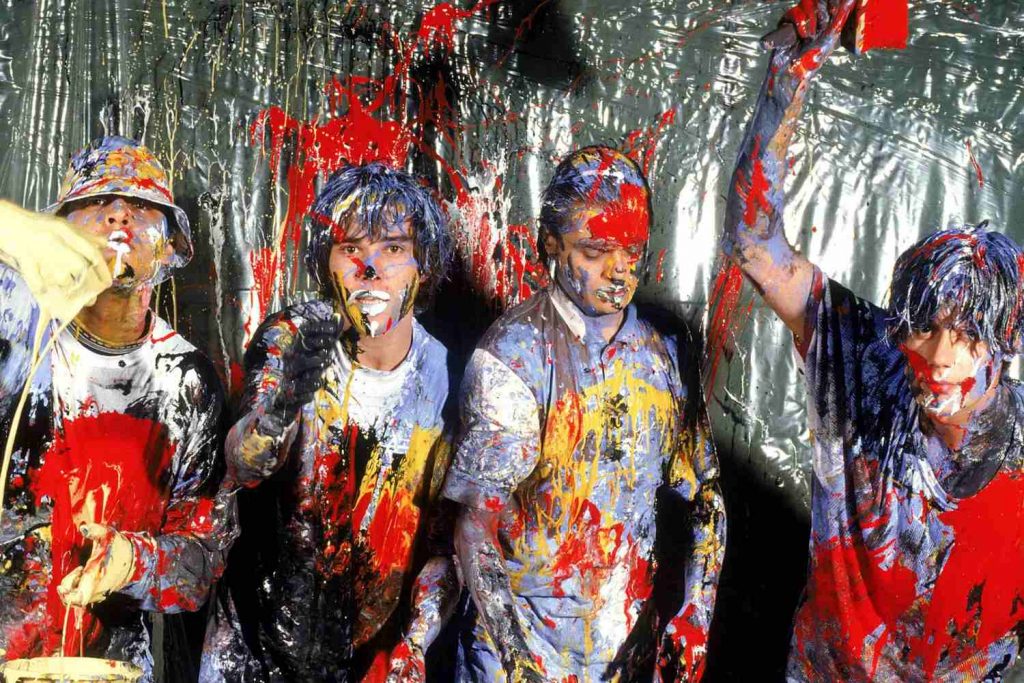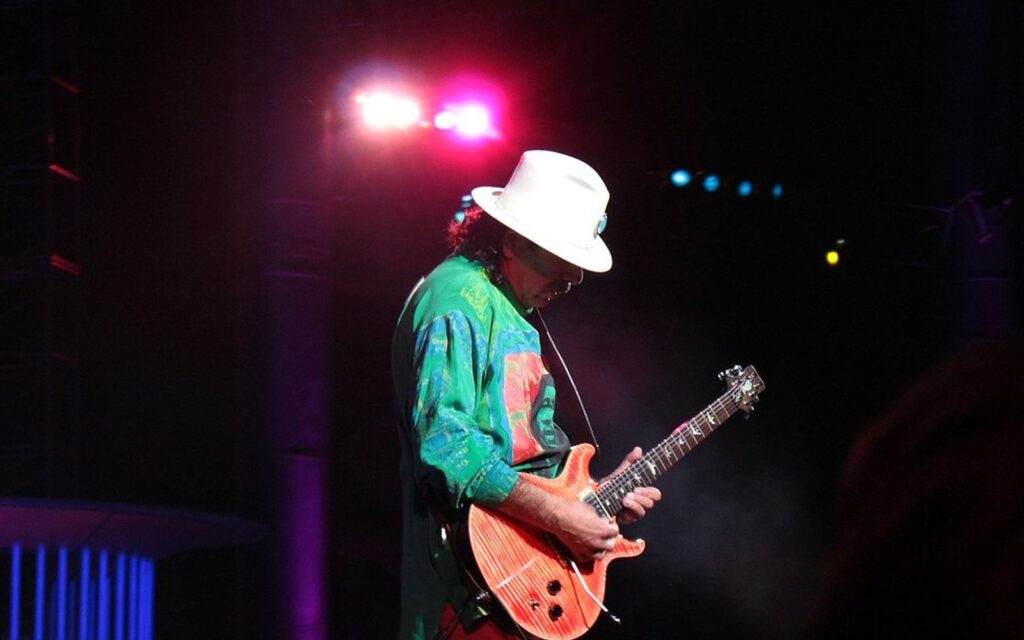Bloc Party's music toes the line between nostalgic and modern, having both a timeless energy and transporting us back to our teens.
Bloc Party have been a staple of rock since their debut album Silent Alarm, this year celebrating 20 years. Blending mathy rock and pop with a generous helping of indie, Bloc Party’s sound is instantly identifiable by drums teetering on the verge of chaos, shimmering and detailed guitar parts with frontman Kele Okereke’s vocals, Bloc Party use a few unique pieces of gear to perform, write and record their sounds.
Fender Telecaster
Throughout the majority of their time in Bloc Party, both Kele Okereke and Russell Lissack have utilised the humble Fender Telecaster as their primary guitars, pairing the classic solid body guitar with layers of effects to complete their signature twin guitar attack.
Since the release of the band’s rapid-fire debut Silent Alarm in 2005, Okereke has favoured an early 2000s Fender MIM Telecaster in a sunburst finish, using the guitar as his main touring instrument ever since. Okereke’s Telecaster appears to be stock, with the exception of a black pickguard, which was added some time around the release of 2012’s Four.
Lissack’s Telecaster is slightly more recognisable than Okereke’s, featuring a Jonny Greenwood-esque assortment of various cartoon stickers and pins across the body and strap. Purchased in 2003 with his share of Bloc Party’s advance upon signing to Wichita Recordings, Lissack’s Tele hails from the US, and features the addition of a Seymour Duncan single-coil in the bridge position. Like Okereke, Lissack has used his Telecaster as his main guitar throughout much of his career, and still tours with the instrument today.
Read up on all the latest features and columns here.
Gretsch Chet Atkins Tennessee Rose
For Bloc Party’s more mellow songs, Okereke often straps on a hollow-body Gretsch Chet Atkins model, which he acquired around the touring cycle for A Weekend In The City. Okereke’s Gretsch can be heard throughout performances of tender tracks such as ‘This Modern Love’ and ‘I Still Remember.’
Fender Telecaster ’72 Custom
In addition to his aforementioned main Telecaster, Lissack often tours with a black ’72 Custom Telecaster, featuring a humbucker in the neck position for beefy tones and a single-coil in the bridge for classic Tele twang. What makes this guitar interesting, however, is the addition of a plastic toy mounted under the pickguard of the instrument, which Lissack uses in conjunction with a custom made delay pedal to create weird, glitchy laser sounds throughout songs such as “Octopus”.
Fender Stratocaster
While touring Four, Okereke began using a Jeff Beck signature Stratocaster for the album cut “Real Talk”, continuing to use the instrument for various songs live while touring the band’s 2016 effort Hymns.
Lissack can also be seen strumming a Stratocaster on occasion, tending to favour the hot-rodded Billy Corgan signature model while on the road.
Gibson SG
When performing “The Good News”, a chugging bluesy single from 2016’s Hymns, Lissack eschews his signature style in favour of a laid-back melodic passage, using a slide on his Gibson SG to add to the track.
Fender Hot Rod Deluxe
For almost the entirety of their careers, both Okereke and Lissack have used Fender Hot Rod Deluxe amps, probably due to their widespread availability when touring across the world and tone shaping ease.
It’s worth noting that both guitarists use attenuators with their amplifiers to tame the overall volume and allow for more headroom, which could be due to their heavy use of effects pedals. Okereke and Lissack have been spotted with Marshall PB100’s and THD Hot Plate Power Amplifiers atop of their amps at various points throughout their careers.
Guitar pedals
Bloc Party are renowned for their intuitive use of effects pedals to create uncanny sounds to power their driving dance-rock stylings, with Lissack in particular boasting a monstrous board full of delays, modulation, and distortion effects.
Although still using a fairly respectable amount of effects, Okereke definitely keeps things a little bit more simple than Lissack. His rig consists of a Line 6 DL4 Delay (which he also feeds his vocals into to manipulate throughout ‘Different Drugs’), a Line 6 FM4 Filter Modeler, a Boss RC-20XL Loop Station, a Boss DD-3 Digital Delay, two Boss OS-2 Overdrive/Distortions, a Boss OC-3 Super Octave (used to play bass parts throughout ‘Sunday’) and a Boss TU-2 Tuner.
Lissack, on the other hand, is an absolute madman and loves effects pedals more than he loves children, chocolate cake and possibly even life itself. His pedalboard, a complex beast, is best observed by watching Premier Guitar‘s feature on Bloc Party from 2016, which features Lissack running through his complex signal path and how he uses oddities such as the Boss SL-20 Slicer and Line 6 MF to create the warbling tremolo effects heard in ‘Virtue.’
Elsewhere, Lissack explains how he uses his four delay pedals to create the unique reverse sound that opens Silent Alarm with ‘Like Eating Glass’, as well as how he pairs an EHX HOG with distortion for the iconic riff from “Hunting For Witches”. Needless to say, the man sure knows his shit.
K Custom Special Dry HiHats + K Custom cymbals
Drummer Louise Bartle has a few special additions to her kit, including K Custom Special Dry HiHats specifically as well as K Custom cymbals overall. K Custom cymbals have a darker, dryer sound, working well for the frenetic, fast and sometimes chaotic energy of Bloc Party’s music. Brighter, more washy cymbals would do just that—wash over the detailed and sparkling guitars of Kele and Russell.
Evans heads + clear drum heads
Bartle also plays Evans heads, jumping between coated heads on her toms for a fatter, less ring-y sound and the opposite end of the spectrum, lear heads for more tone, note and ring. Her snare is always a coated head.
Keep up with Bloc Party here.
